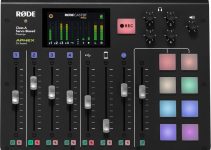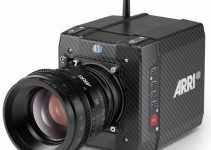Do you remember the 3rd of November 2011? This was an essential date for the filmmaking community and the industry in general as this was the first time a manufacturer announced a sub-$10,000 4K camera available to the masses. The Red Scarlet-X was a highly demanded and long-anticipated camera capable of shooting 4K at 25fps.
The retail price of the Scarlet-X body with an Aluminium Canon Mount and side SSD slot was $9,750 which was unheard of the time. This was the date that Canon also announced the EOS line up of cinema cameras at their own special Hollywood event revealing the C300 and hinting the release of the world’s first 4K DSLR the Canon 1DC officially announced in April 2012.
More than 3 years later, the camera landscape has drastically and irreversibly changed. Now we have more affordable 4K cameras than ever before, and there’s more to come in 2015. Back in 2012, Blackmagic Design has also surprised the industry with the release of BMCC 2.5K and their upcoming and inexpensive line-up of cinema cameras, however, the big question whether they are better compared to their 4K predecessors and Red’s in particular still remains. In the next in-depth video shootout produced by Corey from Faymus Media, we’ll see some of the strengths and weaknesses of the Red Scarlet-X compared against the BMPC 4K.
I’m not quite convinced if this is the most objective and fair way to evaluate both cameras as the Scarlet-X camera features a sensor technology that’s more than 5 years old. Probably it would be better to see how the new Scarlet Dragon would compete against the BMPC 4K, and I’m pretty sure that the results would be a little bit different.
As for the test, according to Corey, in terms of the price, there is a clear winner, and this is the Production camera from Blackmagic Design. It’s 3x cheaper, provides a sharper image, has no rolling shutter artefacts due to the global shutter, delivers better low light performance (which was a kind of a surprise to me), has longer battery life, its lighter, etc.
On the other hand, we should not neglect the strengths of the Red Raw codec which is still one of most efficient and flexible raw codecs out there even today. Further, the Scarlet outputs a full DCI 4K at 4096 x 2160, while the BMPC 4K is UHD only in ProRes with maximum resolution of 3840 x 2160, or 4000 x 2160 in CinemaDNG compressed Raw, which is still in between UHD and DCI.
In addition, the new Scarlet Dragon is capable of shooting 6K at 12 fps, 5K at 48fps, 4K at 60fps and its sensor has an unparalleled dynamic range of more than 16 stops providing more versatile aspect ratio recording modes, but the price is much higher, though. One should pay $14, 500 for the brain only.
In terms of image quality both cameras are great tools and deliver exceptional 4K images and perform in a similar way, with the Scarlet-X providing a little better color rendition and dynamic range with 13 stops compared to 12 of BMPC, but the Blackmagic does seem to have better sharpness and more organic noise in the blacks. I personally prefer Red’s color science as the image looks more natural and filmic in a way.
Overall, it’s great that today we have so many options to pick from. There is a camera for almost every budget and every shooting scenario now whether your project requires high-resolution images, slow-motion, Raw, whether you are going to shoot in a studio or outside with the available light only etc. Unfortunately, there is no perfect camera out there and probably the most suitable for you is the one that you know well and trust the most.
Disclaimer: As an Amazon Associate partner and participant in B&H and Adorama Affiliate programmes, we earn a small comission from each purchase made through the affiliate links listed above at no additional cost to you.





I own both these cameras and 9 times out of 10, I will choose the RED. Much better overall unless in a run-n-gun situation. The BMPC 4K is NOT stable. Even using recommended cards, I cannot trust RAW, it drops frames especially when it gets hot(happens a lot). I have 2 of the BlackMagic’s and both exhibit this behavior. I like the BMPC for running on the DJI Ronin because it’s lighter weight and the global shutter as mentioned above, but that and long format is it’s strength.
Trent, as I’m deciding on my first beyond-DSLR camera, your post and one other mentions this dropping frames. You are the first I read about the overheating. why are these significant problems so well guarded? Is it because reviewers, including the amusing spikey-haired friend above, do such a cursory one-time shoot?
For the little I have to spend – under $6000 – I’m leaning on a used C100. This could later become the B camera. For the moment 4K is not necessary, and prices are going down fast, while more features coming on. I would love the Sony FS7 but can’t justify it. What do you think of the C100 other than the obvious no 4K and no high speed? I’m thinking that I won’t lose much on owning it for a year or so and it will do everything well that I really need.
Funny. I have two BMPC4k’s and both run as they should.
I never had a dropped frame in UHD@25p nor UHD@30p shooting raw. Not with Samsung 256G 840 pro SSD’s nor with Sandisk Ultra II 480G SSD’s. I even tested this mutliple times as both of the ssd’s are not in the approved hw list – all frames were there, none of them corrupted or missing.
OT: After doing a shuffle with firmware versions (1.9.7->1.8->1.9.9) image got cleaner and the fixed white that jumped out form 1.9.5->1.9.7 – dots dissapeared. Asa 800 became somewhat useful.
The C100 is an EXCELLENT camera!
It has the most FILMIC (i.e. Hollywood Production) when
compared to teh Black Magic, the Scarlet, Panasonic GH4
and even the Sony a7s.
This means for VIDEO production such as for
making Safety, Training, Informational, Wedding
and Corporate Video work you don’t have to do
much colour grading or massaging of the shot video.
The images coming from the C100 looks GREAT right
outside of the box!
And the C100 has the best FEEL of the bunch so that
if you’re shooting for 10 hours a day at a wedding or
corporate event, it won’t strain your fingers or kill
your eyesight looking for tiny controls.
It’s a very ergonomic camera! (we’ve got one!)
For night shooting though I suggest getting a decent
“Sun Gun” with some soft spun cloth to soften the light
and shoot at no more than 1600 ISO or a MAXIMUM of 3200 ISO.
LIGHT THE NIGHT! Use good and soft portable lighting
to take advantage of the SUPERIOR out-of-the-box
colour rendition of the C100. To get the Hollywood look
DO NOT SHOOT at 12 THOUSAND+ ISO…you’re just taking
all the colour out your pictures no matter WHAT camera you use.
Use SOFT LIGHTING AT NIGHT!
I know the C100 is pricey but it’s superior ergonomics
and FILMIC LOOK out-of-the-box makes up for any of
it’s dynamic range limits!
is there any chance i can have a look at your work ?
You have a few facts wrong: the Scarlet Dragon has 16+ stops of dynamic range without HDR. It can only do 12fps at 6K. Other frame rates are correct.
Cheers, Daniel – all corrected. Thanks for spotting them.
I just now saw the video, and there’s a lot of misinformation in it. I’m not going to correct it all here, but suffice to say that except for the shutter test, which undeniably goes to the BM, everything else was done with a huge bias, and some of the info is just plain wrong. Wonder what this guys motivation is…
Maybe you should ask him.
16+ on paper maybe, at least from tests I’ve seen its more like 15, but those things like any other tests are very subjective. One test can show 16 , another 14 and another even less. I don’t buy the whole 16+ DR.
There’s another wrong figure. The BM Production Camera is 4000 x 2160 in Cinema DNG raw.
Personally I don’t like these my-camera-is-better-than-your-cameras type tests. The real question is will a $3K camera intercut with a $10K and up camera.
Not really, the figure in the article refers to 3840 x 2160 in ProRes. not talking about raw here. But if you want to be pedantic – 4000 x 2160 isn’t really DCI, so it means little here.
well some people intercut GoPro’s with Epics and Alexas, so why not. Walking dead intercut a 300 dollar GoPro with $$$ Super 16 and 35mm film so, if they can do it, why not. I’d intercut my BMCC footage with any other $10K camera any day of the week. If it’s exposed correctly and white balanced properly, even prores HQ422 plays nice with bigger cameras.